1000011
1001111
1000100
1000101
Background
The sequence of 1's and 0's make up a binary number. Binary numbers work by using each digit to represent a power of 2 (e.g. 2⁰, 2¹, 2²). For every digit that is 1, you add the corresponding powers of 2 together to produce an integer.
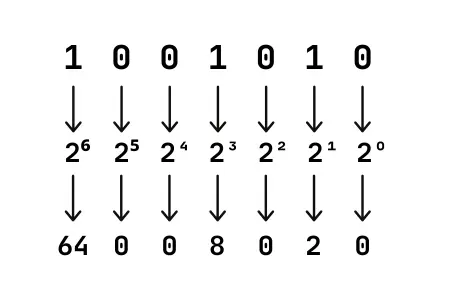
Binary Example
Source: Aayush Sood
In the example above, the 1's are placed at exponents 2⁶, 2³, and 2¹. These values correspond to the values 64, 8, and 2, respectively, adding up to 74.
Any data can be represented with binary, including letters. Whenever you type a letter on your keyboard, binary numbers are being sent to the computer to display the letter. This happens because every letter is associated with an ASCII (American Standard Code for Information Interchange) value. These values are regular integers (e.g. 20), which are easier for humans to read. The sum of 1's in a binary number corresponds to the ASCII value of a letter. In the example above, the ASCII value of 74 is associated with the letter: 'J'. An ASCII table contains all ASCII values and their corresponding letters, providing a centralized reference.
Here is an example of an ASCII table (this does not include all ASCII values):
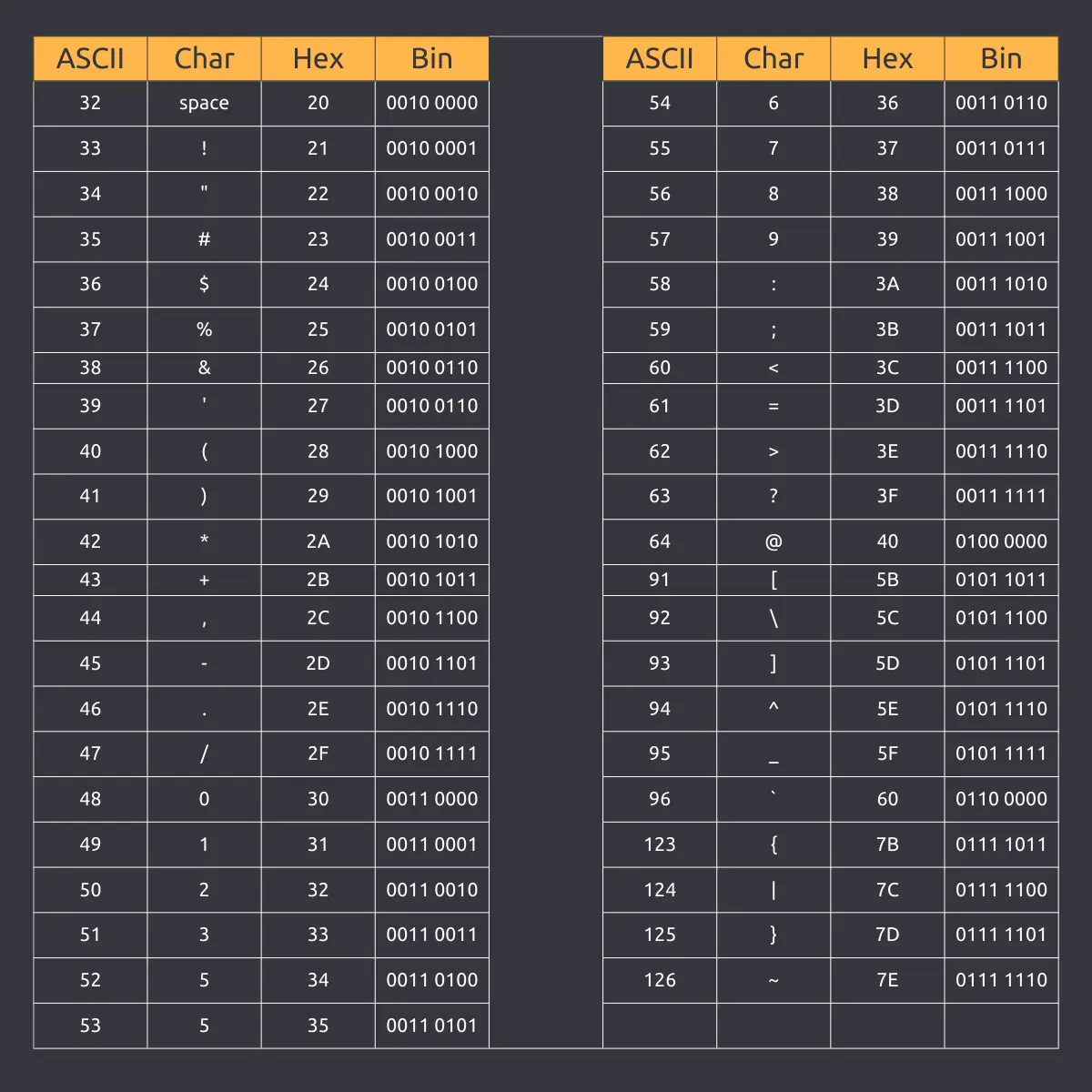
ASCII Table
Source: Sagar Sharma, Linux Handbook, linuxhandbook.com
1000011
Let's solve for this binary number:
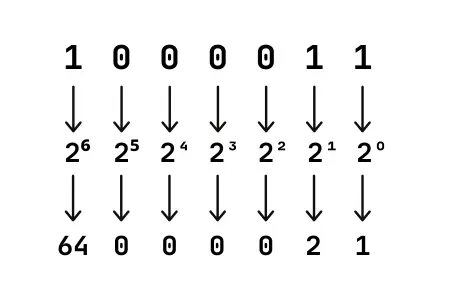
'C' Binary
Source: Aayush Sood
Adding the 1's values (64 + 2 + 1) together produces 67, corresponding with an uppercase 'C'. This is our first letter.
1001111
Let's solve for this binary number:
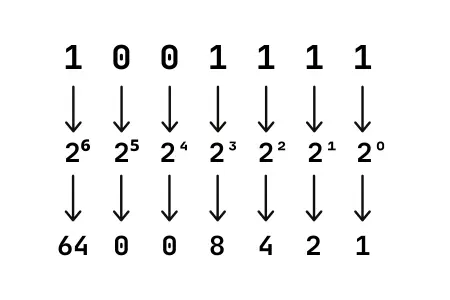
'O' Binary
Source: Aayush Sood
Adding the 1's values (64 + 8 + 4 + 2 + 1) together produces 79, which corresponds with an uppercase 'O'. This is our second letter.
1000100
Let's solve for this binary number:
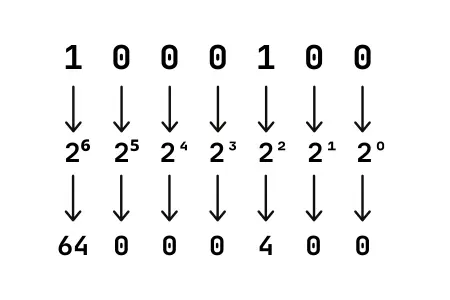
'D' Binary
Source: Aayush Sood
Adding the 1's values (64 + 4) together produces 68, with it's corresponding with an uppercase 'D'. This is our third letter. You probably see where this is going.
1000101
Let's solve for this binary number:
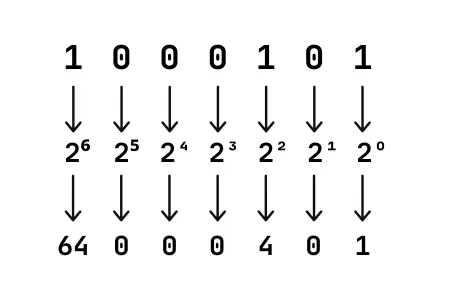
'E' Binary
Source: Aayush Sood
Adding the 1's values (64 + 4 + 1) together produces 69, with our final number corresponding with an uppercase 'E'. This is our fourth and final letter.
Piecing the letters together forms the word 'CODE'. This demonstrates how words can be represented in binary, allowing your computer to understand which letters to input when you're typing.
Meet the Team!
President: Aayush Sood
Vice President: Jaxson Hynes
Communications Executive: Yahya Amer
Logistics Executive: Seth Farris
Secretary: Din Paunescu
Mentees: Noah Windover, Yarden Vissman, Krtin Rathi
